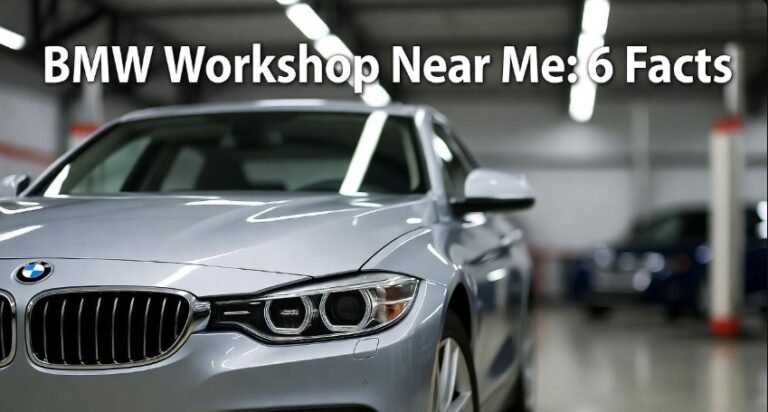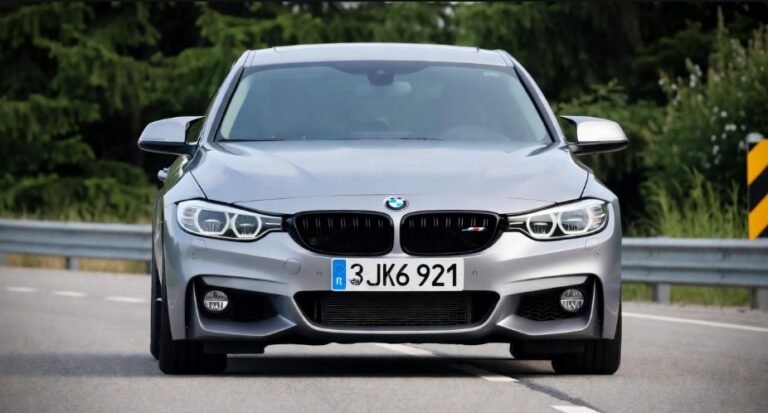BMW C 400 GT Mileage: 6 Specs

BMW C 400 GT Mileage: 6 Must-Know Specs You Can’t Miss
The BMW C 400 GT offers impressive fuel efficiency for its class, making it a smart choice for commuting and touring. Understanding its key mileage specifications is crucial for planning your rides and budget. Here’s what you need to know about your BMW C 400 GT’s mileage.
In This Article
- 1 Key Takeaways
- 2 Understanding BMW C 400 GT Engine and Performance Specs
- 3 BMW C 400 GT Mileage and Fuel Management
- 4 External Factors Affecting Your Scooter’s MPG
- 5 Maximizing Your BMW C 400 GT Mileage: Practical Tips
- 6 BMW C 400 GT Mileage: A Look at Real-World Figures
- 7 Understanding Your BMW C 400 GT’s Specifications in Summary
- 8 Frequently Asked Questions (FAQs)
- 8.1 Q1: What is the official MPG for the BMW C 400 GT?
- 8.2 Q2: How can I improve my BMW C 400 GT’s mileage?
- 8.3 Q3: Does riding on the highway affect my C 400 GT’s mileage compared to city riding?
- 8.4 Q4: What is considered the optimal tire pressure for the BMW C 400 GT?
- 8.5 Q5: How much does a full tank of gas cost for the BMW C 400 GT?
- 8.6 Q6: Can the BMW C 400 GT be used for long-distance touring?
- 9 Conclusion: Drive Smarter with Your BMW C 400 GT
Key Takeaways
Maximize your BMW C 400 GT’s mileage through proper riding.
Understand the engine size impacts fuel consumption.
Learn how tire pressure affects your scooter’s efficiency.
Discover how maintenance influences mpg.
Factor in riding conditions for real-world mileage.
Utilize the BMW Connected app for ride data.
You’re likely here because you’re curious about how far your BMW C 400 GT can take you on a single tank of gas. It’s a common question for any rider, especially when planning longer trips or managing your fuel budget. The term “mileage” refers to how many miles your scooter can travel per gallon of fuel, often abbreviated as MPG. Understanding this is key to enjoying your ride without constant worry about refueling. This guide will break down the essential specifications that influence your BMW C 400 GT’s mileage, making it simple to grasp. Let’s dive into the six key specs that matter most.
Understanding BMW C 400 GT Engine and Performance Specs
The heart of any vehicle’s fuel efficiency lies in its engine and how it’s engineered to perform. For the BMW C 400 GT, several engine-related specifications play a significant role in determining its mileage.
1. Engine Displacement: How Size Affects Fuel Use
Engine displacement is a fundamental measure of an engine’s size. It’s typically measured in cubic centimeters (cc) and represents the total volume swept by all the pistons inside the cylinders. For the BMW C 400 GT, the engine displacement is 350cc. Generally, a smaller engine displacement tends to be more fuel-efficient than a larger one, assuming similar technology and design. The 350cc single-cylinder, four-stroke engine in the C 400 GT is designed to balance performance with economy, making it suitable for a variety of riding scenarios.
In simpler terms, think of displacement like the lung capacity of the engine. A smaller lung capacity means it takes in less air and fuel mixture per cycle, thus using less fuel overall. While a larger engine might offer more power, it will typically consume more fuel to achieve that power output. The 350cc engine is a sweet spot that provides enough power for confident acceleration and highway cruising while keeping fuel consumption in check.
2. Horsepower and Torque: The Power-to-Efficiency Balance
Horsepower (HP) is a measure of the engine’s power, while torque is the rotational force it produces. The BMW C 400 GT boasts approximately 34 horsepower. While more horsepower often translates to higher speeds and quicker acceleration, it can also mean increased fuel consumption, especially if the engine is working hard. Torque is crucial for acceleration from a standstill and for maintaining speed on inclines. The C 400 GT’s torque output is tuned to provide sufficient grunt for city riding and overtaking without demanding excessive fuel.
When you accelerate hard or climb a steep hill, your engine is working harder, burning more fuel. A well-designed engine, like BMW’s, aims to deliver the necessary power efficiently. This means you get the performance you need when you need it, but the engine isn’t constantly guzzling fuel during normal riding. Learning to ride smoothly, without abrupt acceleration and braking, can significantly improve your mileage, allowing you to utilize the engine’s efficiency more effectively.
BMW C 400 GT Mileage and Fuel Management
Beyond the engine itself, how the scooter manages fuel and how much fuel it can hold are critical for your overall riding range.
3. Fuel Tank Capacity: How Far Can You Go Between Stops?
The fuel tank capacity of the BMW C 400 GT is 12.5 liters (approximately 3.3 US gallons). This specification, combined with the scooter’s fuel efficiency, determines how far you can travel before needing to refuel. A larger fuel tank means fewer stops on longer journeys, which is a significant consideration for touring or commuting.
Let’s say, for example, the C 400 GT achieves an average of 60 miles per gallon (MPG). With a 3.3-gallon tank, you could theoretically travel around 198 miles (60 MPG 3.3 gallons) on a full tank. This is a crucial piece of information for planning your routes and ensuring you don’t run out of fuel in an inconvenient location. Always remember that real-world mileage can vary, so it’s wise to plan your refueling stops slightly before you reach the theoretical maximum range.
4. Fuel System and Injection: Precision Matters
The BMW C 400 GT utilizes a sophisticated electronic fuel injection (EFI) system. EFI systems are a significant advancement over older carburetor systems because they precisely control the amount of fuel delivered to the engine based on various sensor inputs like engine speed, throttle position, and air temperature. This precision leads to more efficient combustion, better performance, and improved fuel economy.
Compared to carburetors, EFI systems can adjust fuel delivery in real-time, ensuring the engine always has the optimal air-fuel mixture. This is particularly beneficial in varying conditions, such as cold starts or changes in altitude. The result is a more consistent and efficient fuel burn, contributing positively to the C 400 GT’s overall mileage. This technology is a hallmark of modern, efficient vehicles found across major automotive brands.
External Factors Affecting Your Scooter’s MPG
While the scooter’s specifications are vital, external elements and rider behavior significantly impact real-world fuel consumption.
5. Tire Pressure and Rolling Resistance: The Unsung Heroes
Tire pressure is one of the easiest factors to overlook, yet it has a profound impact on fuel efficiency. Underinflated tires create more rolling resistance. This means the engine has to work harder to move the scooter forward, consuming more fuel. The recommended tire pressure for the BMW C 400 GT can be found on a sticker on the motorcycle itself, typically on the swingarm or frame, and in the owner’s manual. Maintaining the correct tire pressure ensures optimal contact with the road and minimizes energy loss.
For instance, if your tires are significantly underinflated, you might see a noticeable drop in your scooter’s MPG. Regularly checking your tire pressure, ideally before longer rides, is a simple maintenance task that yields significant benefits. It’s also important for safety and tire longevity. For more on tire maintenance, consult resources from organizations like the National Highway Traffic Safety Administration (NHTSA).
Here’s a quick look at how tire pressure can influence your ride:
| Tire Pressure Status | Impact on Rolling Resistance | Effect on Fuel Efficiency |
|---|---|---|
| Correctly Inflated | Optimal | Best MPG |
| Slightly Underinflated | Increased | Reduced MPG |
| Severely Underinflated | Significantly Increased | Considerably Reduced MPG, Increased Tire Wear |
6. Riding Style and Conditions: Your Habits Matter
Your riding habits and the conditions you ride in play a massive role in your BMW C 400 GT’s mileage. Aggressive riding, characterized by rapid acceleration and hard braking, consumes significantly more fuel than smooth, steady riding. If you often find yourself weaving through traffic with sudden bursts of speed, your MPG will suffer. Conversely, maintaining a consistent speed, anticipating traffic lights, and coasting when possible can save a considerable amount of fuel.
Road conditions also influence mileage. Riding on highways with open roads and steady speeds is generally more fuel-efficient than stop-and-go city traffic. Uphill climbs require more engine power and thus more fuel. Adverse weather, such as strong headwinds or riding in rain, can also increase fuel consumption due to increased resistance. Considering these factors and adapting your riding style can lead to substantial improvements in your scooter’s mileage.
Maximizing Your BMW C 400 GT Mileage: Practical Tips
Achieving the best possible mileage from your BMW C 400 GT involves a combination of smart riding habits, regular maintenance, and understanding how your scooter works.
Pro Tips:
Smooth Acceleration is Key: Gently roll on the throttle instead of snapping it open.
Anticipate Traffic: Look ahead and ease off the throttle early when you see a red light or slowing traffic.
Maintain Steady Speeds: On highways, use cruise control if available or maintain a consistent speed.
Reduce Unnecessary Weight: Remove any added accessories or gear you don’t need for your trip.
Regular Servicing: Keep your engine tuned and filters clean for optimal performance and efficiency.
Regular Maintenance for Optimal MPG
Consistent and proper maintenance is non-negotiable for achieving good mileage. This includes ensuring your engine oil is changed at the recommended intervals, air filters are clean, and drive belts are in good condition. A well-maintained engine runs more efficiently, burns fuel cleaner, and ultimately delivers better MPG.
- Oil Changes: Use the correct grade of oil recommended by BMW. Clean oil lubricates engine parts effectively, reducing friction and improving efficiency.
- Air Filter: A clogged air filter restricts airflow to the engine, forcing it to work harder and consume more fuel. Clean or replace it as per the service schedule.
- Spark Plugs: Worn spark plugs can lead to incomplete combustion, wasting fuel. Ensure they are inspected and replaced when necessary.
- Chain/Belt Maintenance: For models with a chain drive, proper lubrication and tension are crucial. For belt drives, ensure the belt is in good condition.
The Role of Riding Gear
While not directly a mechanical spec, your riding gear can also influence aerodynamics, and thus, indirectly, mileage. Bulky, loose-fitting gear can create more wind resistance, especially at higher speeds. Opting for well-fitting, aerodynamic riding apparel can make a small but noticeable difference in reducing drag and improving fuel efficiency.
BMW C 400 GT Mileage: A Look at Real-World Figures
While BMW doesn’t always publish official MPG figures for every model, user reports and reviews often provide real-world insights. Based on owner experiences and typical performance for scooters in this class, the BMW C 400 GT is generally reported to achieve mileage in the range of 50 to 65 miles per gallon (MPG). This figure, of course, is an average and can fluctuate based on the factors we’ve discussed.
It’s important to remember that these are estimates. Your actual mileage will depend on:
- Your specific riding style (aggressive vs. conservative).
- The type of riding you do (city commuting vs. highway cruising).
- The terrain (flat versus hilly).
- Weather conditions (wind, temperature).
- Rider and passenger weight.
- Maintenance status of the scooter.
For the most accurate personal tracking, consider using the BMW Motorrad Connected app. It can provide data on your rides, including average speed and distance, which can help you estimate your fuel consumption over time. For more official data and specifications, you can always refer to the BMW Motorrad official website.
Understanding Your BMW C 400 GT’s Specifications in Summary
To recap, here are the six key specifications and factors that influence your BMW C 400 GT’s mileage:
| Specification/Factor | Description | Impact on Mileage |
|---|---|---|
| Engine Displacement (350cc) | Size of the engine’s cylinders. | Smaller displacement generally leads to better efficiency. |
| Horsepower (~34 HP) | Engine’s power output. | Higher power demands can increase fuel consumption if not managed. |
| Fuel Tank Capacity (12.5 Liters) | Amount of fuel the tank holds. | Determines the theoretical range between refueling stops. |
| Fuel System (Electronic Fuel Injection) | Precise delivery of fuel to the engine. | Ensures optimal fuel-air mixture for efficient combustion. |
| Tire Pressure | Inflation level of the tires. | Underinflated tires increase rolling resistance, reducing MPG. |
| Riding Style & Conditions | How and where you ride. | Smooth riding and ideal conditions maximize fuel efficiency. |
Frequently Asked Questions (FAQs)
Q1: What is the official MPG for the BMW C 400 GT?
BMW Motorrad typically does not publish official MPG figures for their scooters. However, based on owner reports and the scooter’s specifications, the BMW C 400 GT generally achieves between 50 to 65 miles per gallon (MPG) in real-world riding conditions.
Q2: How can I improve my BMW C 400 GT’s mileage?
You can improve your scooter’s mileage by adopting a smoother riding style, maintaining proper tire pressure, ensuring regular maintenance (oil changes, clean air filter), reducing unnecessary weight, and avoiding excessive idling.
Q3: Does riding on the highway affect my C 400 GT’s mileage compared to city riding?
Yes, highway riding at a consistent speed is generally more fuel-efficient than stop-and-go city riding, where frequent acceleration and braking consume more fuel. However, very high highway speeds can also decrease efficiency.
Q4: What is considered the optimal tire pressure for the BMW C 400 GT?
The optimal tire pressure specific to your BMW C 400 GT can be found on a sticker located on the scooter’s frame or swingarm, and in your owner’s manual. Always refer to these sources for the manufacturer’s recommendation.
Q5: How much does a full tank of gas cost for the BMW C 400 GT?
The cost depends on the current fuel prices in your area and the tank capacity (12.5 liters or about 3.3 gallons). If gas is $4.00 per gallon, a full tank would cost approximately $13.20 (3.3 gallons * $4.00/gallon).
Q6: Can the BMW C 400 GT be used for long-distance touring?
Yes, the BMW C 400 GT is well-suited for touring thanks to its comfortable ergonomics, ample storage, and decent fuel efficiency. Its mileage allows for reasonable ranges between fuel stops, making it a practical choice for longer journeys.
Conclusion: Drive Smarter with Your BMW C 400 GT
Understanding the mileage specifications of your BMW C 400 GT is more than just knowing a number; it’s about empowering yourself to ride smarter, plan better, and enjoy your journeys more. By paying attention to the engine’s displacement, its power output, fuel tank capacity, the precision of its fuel injection, and external factors like tire pressure and your riding style, you can significantly influence how efficiently you travel. Regular maintenance and mindful riding habits are your best allies in maximizing every drop of fuel.
The BMW C 400 GT is a remarkable scooter that blends luxury, performance, and admirable fuel economy. Embracing these insights will help you get the most out of your ride, whether you’re navigating urban streets or embarking on a weekend adventure. Drive with confidence, knowing you’re informed and ready to make the most of your BMW C 400 GT’s impressive mileage potential.






